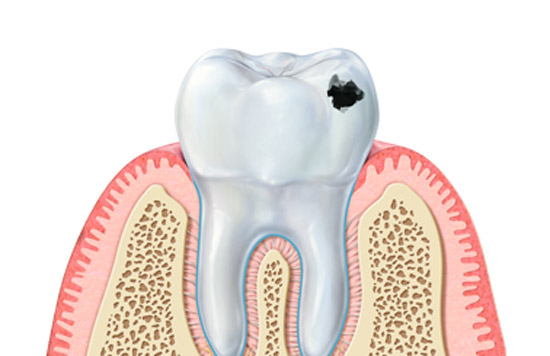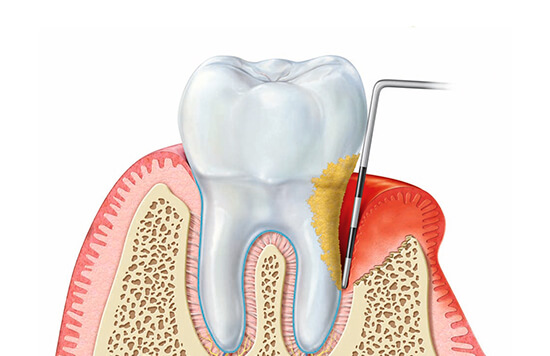
What causes peri-implant diseases?
Dental implants are titanium fixtures which are used to replace missing teeth, and have the special feature of attaching to the bone through a process called osseointegration, a direct bond between implant and bone, unlike teeth which attach to the bone by way of the periodontal ligament.
Peri-implant diseases are classified as peri-implant mucositis or peri-implantitis.
Peri-implant mucositis is a multifactorial disease caused by the accumulation of biofilm, in which an inflammation of the peri-implant mucosa occurs without any destruction of the implant support tissues. As in gingivitis, the principal signs are inflammation, redness and bleeding. About 80% of persons with dental implants may have peri-implant mucositis.
Similarly, peri-implantitis is a multifactorial disease caused by an accumulation of biofilm, resulting in inflammation of the peri-implant mucosa as well as destruction of the implant support tissues, which can cause the implant to lose its grip and potentially fall out. This disease may affect about 30% of dental implant patients.
As with periodontal diseases, peri-implant diseases originate in the biofilm that accumulates especially in the interdental area and the peri-implant sulcus, due to poor oral hygiene. Biofilm is internalised into the peri-implant mucosa, causing an inflammatory reaction in the area (peri-implant mucositis). Over time, the biofilm matures, and more pathogenic species that are capable of destroying the implant supporting tissues may potentially overgrow. In this case, and unlike periodontal diseases, there is no periodontal ligament to facilitate the progression of the disease







